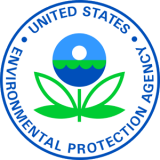EPA Registers Long-Term Uses of Sulfoxaflor While Ensuring Strong Pollinator Protection Across the Midwest
Registration provides benefits to growers and is supported by strong science that shows minimal risks for pollinators
Environmental News
FOR IMMEDIATE RELEASE

After conducting an extensive risk analysis, including the review of one of the Agency’s largest datasets on the effects of a pesticide on bees, EPA is approving the use of sulfoxaflor on alfalfa, corn, cacao, grains (millet, oats), pineapple, sorghum, teff, teosinte, tree plantations, citrus, cotton, cucurbits (squash, cucumbers, watermelons, some gourds), soybeans, and strawberries.
“EPA is providing long-term certainty for U.S. growers to use an important tool to protect crops and avoid potentially significant economic losses, while maintaining strong protection for pollinators,” said Alexandra Dapolito Dunn, assistant administrator for EPA’s Office of Chemical Safety and Pollution Prevention. “Today’s decision shows the Agency’s commitment to making decisions that are based on a sound science.”
“Today’s action ensures reduced risk to pollinators and the environment through crop-specific label restrictions and provides farmers with a critical pest-management tool needed to protect crops from invasive sugarcane aphids, plant bugs, and other pests,” said Jim Gulliford, EPA Region 7 administrator. “Here in Region 7, the registration of sulfoxaflor will help prevent significant hardship for producers of sorghum, corn, cotton, and other commodities attacked by devastating insects.”
Sulfoxaflor is an important and highly effective tool for growers that targets difficult pests such as sugarcane aphids and tarnished plant bugs, also known as lygus. These pests can damage crops and cause significant economic loss. Additionally, there are few viable alternatives for sulfoxaflor for these pests. In many cases, alternative insecticides may be effective only if applied repeatedly or in a tank mix, whereas sulfoxaflor often requires fewer applications, resulting in less risk to aquatic and terrestrial wildlife.
EPA’s registration also includes updated requirements for product labels, which will include crop-specific restrictions and pollinator protection language.
Background
Sulfoxaflor is an important and highly effective tool for growers that targets difficult pests such as aphids and tarnished plant bugs (lygus). These pests can cause significant economic loss, leading several states to request emergency exemptions in recent years. There are few viable alternatives for sulfoxaflor. In many cases, alternative insecticides may be effective only if applied repeatedly, whereas sulfoxaflor typically requires fewer applications resulting in less risk to non-target pests and plants.
In 2016, following a 2015 decision of the Ninth Circuit Court of Appeals vacating the registration of sulfoxaflor citing inadequate data on the effects on bees, EPA reevaluated the data and approved registrations that did not include crops that attract bees. The 2016 registration allowed fewer uses than the initial registration and included additional interim restrictions on application while new data on bees were being obtained. Today’s action, adding new uses, restoring previous uses, and removing certain application restrictions is backed by substantial data supporting the use of sulfoxaflor.
For additional information, please visit EPA’s webpage.
# # #
Learn more about EPA Region 7
View all Region 7 news releases
Connect with EPA Region 7 on Facebook: www.facebook.com/eparegion7
Follow us on Twitter: @EPARegion7
